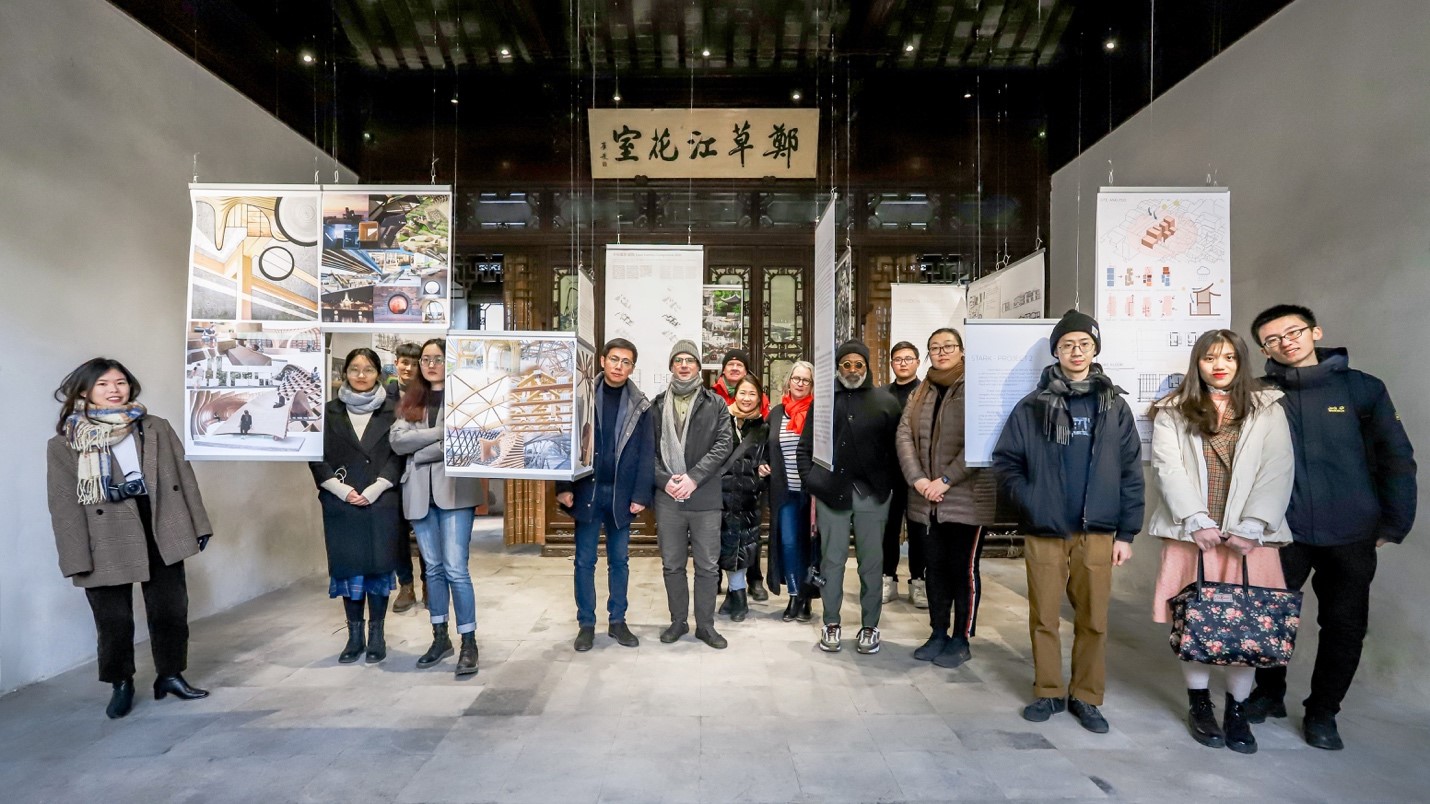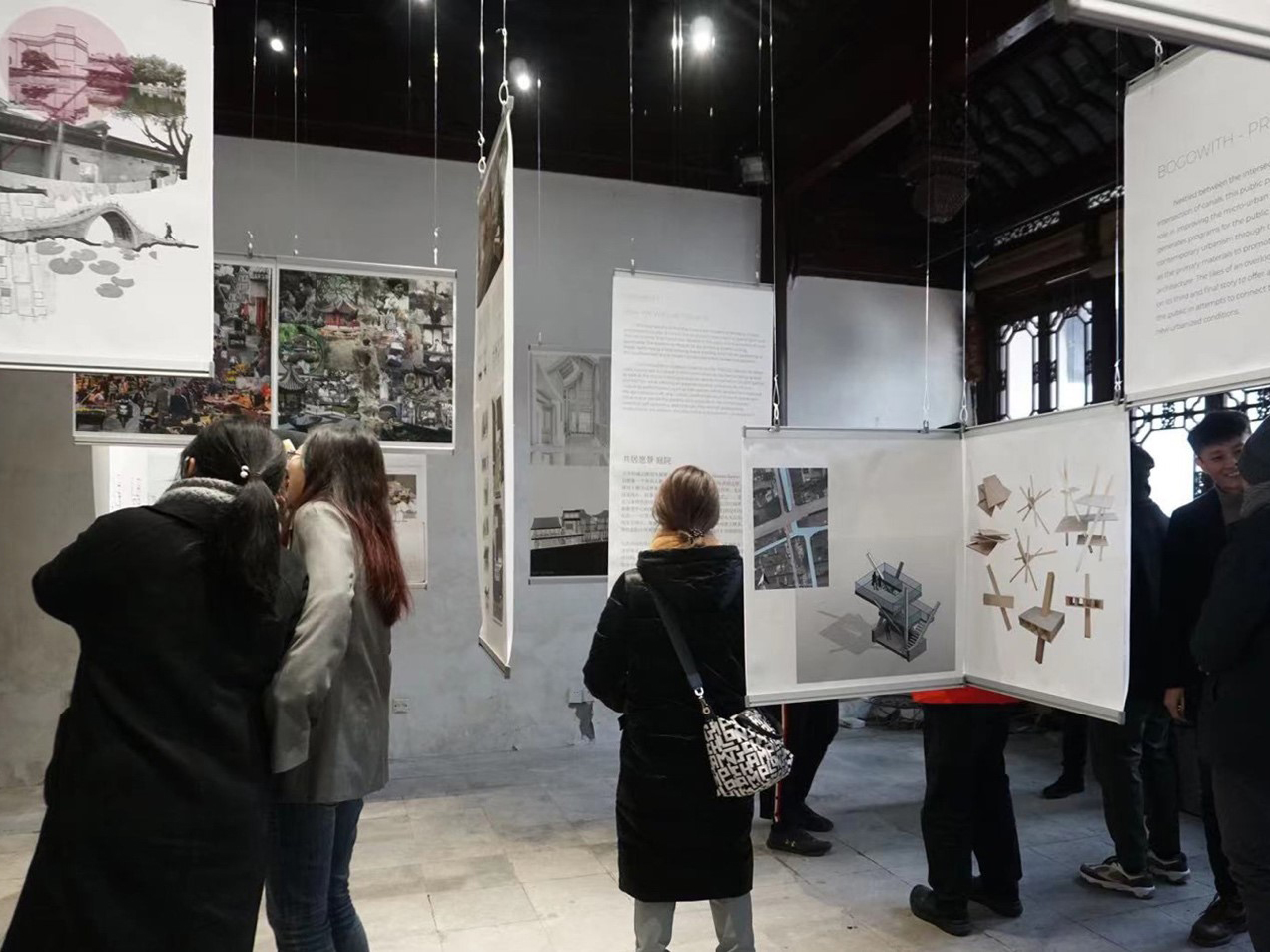21 Jan 2021
A new exhibition “Together, Healthily: Reimagine the Courtyard Hotel“ opened this week in the Shuangta Yingyuan historic garden. The exhibition planned and curated by Adam Brillhart features work born out of international collaboration in search of new typologies of courtyard hotels for Suzhou.
At the opening event of the exhibition, which featured work of XJTLU’s Design Research Centre and Drury University, the owner of the Shuangta Yingyuan Garden and Chairman of Suzhou Wudu Construction Investment Company, Liang Shi, expressed willingness to cooperate with XJTLU and cooperate on projects on Chinese cultural heritage and traditional architecture.

“Recently, interest in the boutique hotel from local governments has been implemented in planning strategies in the ancient city of Suzhou. The term boutique B&B is the operative concept in the planning,” says Brillhart.
In order to promote the protection and renewal of No.32 neighborhood, and provide ample cultural and touristic resources in the ancient city revival, under the “Gusu 8:30” night economic brand, the Suzhou City and Gusu District State-owned enterprises have integrated resources and begun to cooperate closely turning to designers for ideas of exhibiting Suzhou culture in their proposals for high-end boutique hotels which integrate local culture, accommodation and leisure, tourism and business, while offering a customized lifestyle and cultural experience.
Dr. Yiping Dong was the point of contact for XJTLU’s involvement in the GUSU “Heaven on Earth – Silicon Alley” competition with the Design Research Centre last summer. The design team was led by Dr. Adam Brillhart with Dr. Yiping Dong and Nicola Pagnano in Venice, who worked cooperatively online with XJTLU students Xin Chen, Lv Ruqing, Wu Xinying, and Liu Qiaodan to develop a proposal for a boutique hotel on Fulang Alley.

“The competition brief was a fascinating opportunity to explore the question of an authentic hotel for Suzhou,” says Brillhart. The team members focused their effort on undertaking historical surveys and program analysis. The research on courtyards and traditional residences in the design process led to a heritage and conservation led strategy to preserve the urban morphology and spatial quality of Block 32.
“The import of the boutique hotel typology in Suzhou will doubtlessly undergo significant changes, but has a unique opportunity to learn from its invention in 1980s New York… both seem to be a unique invitation for designers to creatively “mask” the small size of cramped dilapidated existing urban spaces by offering fresh aesthetic and social experiences while preserving elements of the old.” Reimagining the boutique hotel typology in light of traditional Suzhou residences and courtyards proved to be a meaningful challenge.
“The flattened version of the typology is challenged to find not only interior solutions but also extend its operations to activate a series of existing and reconfigured courtyards,” says Brillhart. Through collaboration and discussion, the challenge was adapted into a design studio of Professor Huang Yong at Drury University (US) presenting an opportunity for American students to travel in their minds during the pandemic.
According to Dr. Brillhart, the idea for the exhibition started when he was on the final critique reviewing the American students projects. The American students had a fresh outlook on the problem. As Professor Gisela Loehlein commented, “The American students had a more uninhibited approach and could see what we could not from outside. While XJTLU’s proposals had a deeper connection, there are advantages from both sides.” The exhibition was an opportunity for the American students and Chinese students to exchange ideas.
The hotel amenities proposed by the American students such as a distillery, and vegetable market and multi-purpose spaces for literature music and art specifically benefitted the local Suzhou community while providing a unique experience for hotel guests. “It is exciting for students and teachers to consider a hotel which is inclusive and shared while protecting and renewing the neighborhood,” says Brillhart.

Looking forward, XJTLU is planning a joint cooperation effort with Wudu Construction Investment Company. The team will engage with the conservation of the protected Qing Dynasty cultural relic, Shaungta Yingyuan. The work will include programming, renovation, and maintenance of the garden, with the aim of opening the space to a public audience and utilizing the historical environment of the former residence and garden for academic events and various cultural programs.
The exhibition will be open to the public on weekends from January 17-24.
Location: Shuangta Yingyuan - 15 Guan Taiwei (双塔影园: 苏州市姑苏区官太尉15号)
(Story and photos provided by Department of Architecture and Design)
21 Jan 2021




